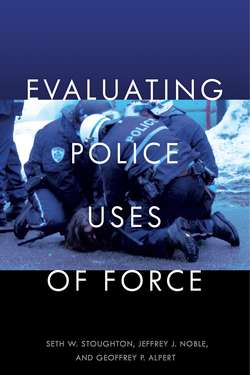Читать книгу Evaluating Police Uses of Force - Seth W. Stoughton - Страница 11
На сайте Литреса книга снята с продажи.
1 The Constitutional Law Standard
ОглавлениеPolice officers, like all government officials, are subject to the limitations imposed by the Constitution of the United States. The body of the Constitution largely sets out the structure of government: Articles I, II, and III lay out the framework for the legislative branch, the executive branch, and the judicial branch, respectively. Article IV explicates the requirements for state governments. Article V sets out the procedures by which the Constitution can be amended. Article VI establishes the Constitution as “the supreme Law of the Land.” Finally, Article VII governs ratification of the Constitution.
The Constitution was first ratified in Delaware, on December 7, 1787, and, pursuant to Article VII, took effect on June 21, 1788, when New Hampshire became the ninth state to ratify it. Since it was first proposed and ratified, the Constitution has been amended twenty-seven times. The first twelve amendments, which include the ten amendments known as the Bill of Rights, were adopted on September 25, 1789, and were instrumental in convincing several colonies to ratify the Constitution and become states.
The Constitution, particularly the Bill of Rights and subsequent amendments, is centrally concerned with public and personal freedoms, which it protects by recognizing what one federal court referred to as “negative rather than positive liberties.”1 In short, the Constitution protects individual rights by limiting the ways the government can infringe on them, but generally does not lay out affirmative obligations that government officials must meet.2
Prior to 1989, there was no clearly defined constitutional standard under which the use of force was analyzed. Federal courts took different approaches, evaluating claims that officers’ uses of force violated constitutional rights by applying the Fourth Amendment’s prohibition of unreasonable seizures, the Eighth Amendment’s prohibition on cruel and unusual punishment, and the Fifth and Fourteenth Amendments’ prohibition on deprivations of liberty without due process of law. In 1985, the Supreme Court applied the Fourth Amendment in the context of a police shooting,3 and, in 1989, the Court settled the issue by holding that the use of force against “free citizens”—that is, individuals other than incarcerated inmates—was to be analyzed under the Fourth Amendment.4
As it relates to police uses of force, the relevant text of the Fourth Amendment reads as follows: “The right of the people to be secure in their persons . . . against unreasonable . . . seizures, shall not be violated.” In the body of this chapter, we will examine when this standard applies, what it applies to, and how it applies.
